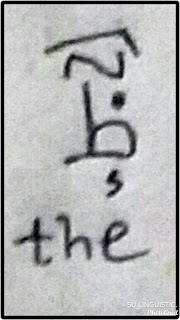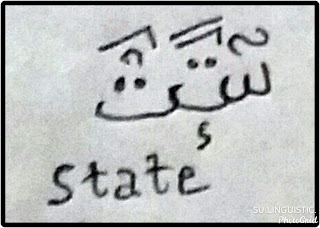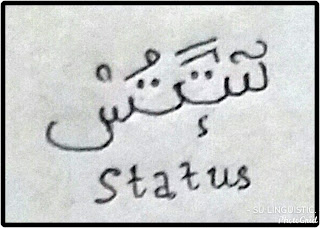Is an Orally History a History? Part-2
Written by : Yusni Tria Yunda.
Some questions those can effort;
1. Why do I use bamboo as the
concrete thing in this script as representative issues that I trying to rewrite
from my experiences before?.
Response: what I do it is depend on
the way of mine to look at the essence from some phenomenon which I am
interesting to. As the same patern as I am facing a few of past times, the
phenomenon are like a revolution's period in modern's history of Indonesia.
2. Why do I taking some legaly
subordinates partitions of mine as the refering roles of "Badan-Badan
Perjuangan" in the revolution's period?.
Response: I do cause it has had one
from a few approach of mine in order to applicating the "if" question
base on the historical thinking approach with the data and facts in my own true
story as my inner legalicies side to know how the correlation between them can
working each other to build some new meanings todays.
3. Why is the rule of comparing the
true story of the researcher,- in this case is me,- with the paper title's
"Peranan Badan-Badan Perjuangan di Distrik Buah Batu pada masa Revolusi
Fisik: Pertempuran di Desa Sapan dan Cijawura, Agustus 1946?".
Response: it is an objectivelly to
taking up the essences of what I've wrote as my paper with what kind I've done
after passing out the paper as the morally balance of the justices
responsibilities of mine beside intellectual responsible at it all.
To answer the A <in Part-1>
without know the cases of B, C, D, and E, could take us to the early conclude
with probability to choice the answer of "it is not", it is cause the
incomplete adverbs rather than B, C, D and E. And it was just normally response
from the answerer while the data in minimum nishob. What thing the researcher
can doing to get this A being history from a story?. Can researcher starting to
write it as it was?. That is why the older conclude from object of history are
often has many probabilities to being changed, whenever there are some new data
found which become some new facts. These are uniquely characteristic in historical
method.
*Heuristic: Collecting Some Data.
Can the things which I've done
whenever found this A, was just starting to write?.
Yes, I can a part of it or at all of
it, or just remembering the main kind about it for a while. The searching is
still doing, and by the time left, another partitions who knew the same thing
which recited by the first partition as a primary person, would meted; intended
and also unintended.
Whenever the second person giving
his or her statement sentences about the thing that talking about, it does
being heuristic consumption to do, therefore the data become some data, and the
witness become witnesses, and of course the story become stories,- cause now
there are two persons recite about it, not one person singular anymore.
Data Processing: Knowing the Items
and Placing Them According Their Statuses Codes.
If the two persons above has
had their knows as directly, cause they were the doers of the stories, this
means they have a status as: primary directly doers. And that two persons added
with the researcher by him or her own self, become "three persons who
knowing the stories". The researcher doesn't have a status as a
"directly doer of primary", but he or she become "indirectly
witness of the directly doers of primary". In the case, if the second
person from directly doers of primary been provided that he or she didn't done
as direct the things which talked in the story, it is means he or she is
getting new status as: "an indirectly doer of primary".
As consequences of this found thing,
so does the researcher getting new some status. The researcher has these status
cause he or she been "an indirectly witness of the directly doer" for
the first person, and also being "an indirectly witness of the indirectly
doer" for the second person. In logically of Point of Sale System, the
researcher has two items to being input in the Inventory Control System
<necessary doing in the back office table>, as long as his or her status
belong to their based on the strength of the persons whom they took as the
primaries. That’s why the researcher can has two of status in the same of time,
and in this case, he or she could get called as "we" to declare their
some statements by the laws. The researcher look like become two different of
peoples, as equal as his or her position in the specific of cases.
|
|
De-construct of the researcher
status like splitting a bamboo. Makes two pieces of bamboos from one piece of
bamboo, as the size and quantities needing to make an equipment post, and input
their values in the balance sheet later. So does with a book which we read.
This time I am trying to splitting own self become "two persons", but
not as paragraph above, it is about how I'm read it and also how I'm giving the
concrete means about the content which I read. With that means this I try;
"<...>.
“The most written part in this book
use also postmodernism views and some aspects in critical pedagogy (‘pedagogi
kritis’) which trying to taking up representative's issues <see the 1st
point of mine above>, emancipatory, participate <see the 2nd point of
mine above>, justices equality <see the 3rd point of mine above>,
autonomy, and dialogue's learns. The writer seeing that as long the time past,
the history of education learned in school which been development up as science
discipline or as a part from social knowledge and science (‘IPS’) was too
pressing on the matters holding (‘essencialysm’), centering on to the great
past of the nation (‘parenialism’), and pressing on examine or measurement to
the students cognitive area by test's instrument (‘possitivism’). According the
view of critical pedagogy's, this kind of history's learning was more supplies
to the dominant groups desire such as the existence regime, elites grouping,
the curriculum's development (teacher) and another else so that be obeying the
student's role as history's doer in their age time. The student's learn
experience which they bringing from their class before or their social environment
didn't being the learning's raw material in classroom so that just placing them
as passive learning members. <...>.". <Supriatna, Nana. "The
Construct of Critical History Learns". Bandung: Historia Utama Press.
First publish printed out in 2007, page i>. I attaching the paragraph above
in the status of me as a reader who writing what I'm understand from this original
book's text below:
'<...> Sebagian besar tulisan
dalam buku ini juga menggunakan cara pandang postmodernism serta beberapa aspek
dalam pedagogi kritis (critical pedagogy) yang berusaha untuk mengangkat
isu-isu representasi <see 1st point of mine above>, emansipasi,
partisipasi <see 2nd point of mine above>, keadilan <see 3rd point of
mine above>, otonomi, dan dialog pembelajaran. Penulis memandang bahwa
selama ini, pembelajaran sejarah di sekolah yang dikembangkan sebagai disiplin
ilmu atau sebagai bagian dari Ilmu Pengetahuan Sosial (IPS) terlalu menekankan
pada penguasaan materi (esensialism), berpusat pada kebesaran masa lalu bangsa
(parenialisme), serta menekankan pada pengujian atau pengukuran ranah kognitif
siswa melalui test (positivism). Menurut cara pandang pedagogy kritis,
pembelajaran sejarah seperti ini dianggap lebih banyak memenuhi hasrat dominant
groups seperti rezim yang sedang berkuasa, kelompok elit, pengembang kurikulum
(guru) dan lain-lain sehingga mengabaikan peran siswa sebagai pe
laku sejarah pada jamannya.
Pengalaman belajar siswa yang dibawa dari kelas terdahulu atau lingkungan
sosialnya tidak dijadikan bahan pelajaran di kelas sehingga hanya menempatkan
mereka sebagai peserta pembelajaran yang pasif. (...).'. <Supriatna, Nana.
"Konstruksi Pembelajaran Sejarah Kritis". Bandung: Historia Utama
Press. Cet. pertama, 2007: halaman i>.








Comments
Post a Comment